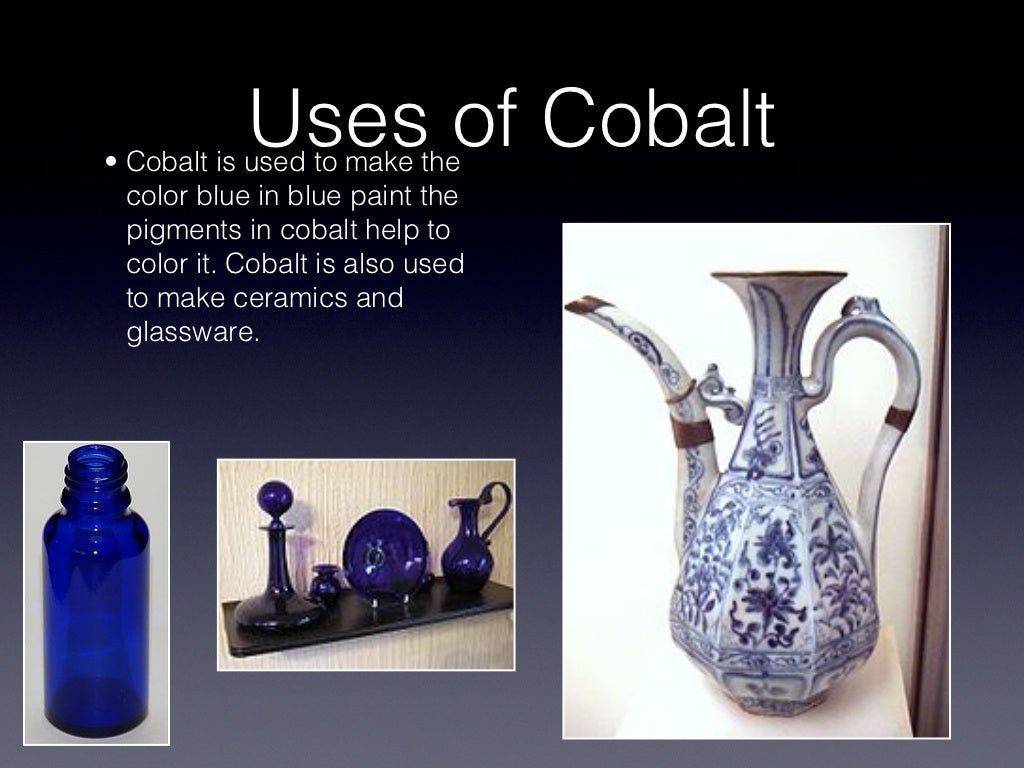
Cobalt is also attacked by oxygen and by water vapour at elevated temperatures, with the result that cobaltous oxide, CoO (with the metal in the +2 state), is produced. It dissolves slowly in dilute mineral acids, does not combine directly with either hydrogen or nitrogen, but will combine, on heating, with carbon, phosphorus, or sulfur. It is ferromagnetic up to 1,121 ☌ (2,050 ☏, the highest known Curie point of any metal or alloy) and may find application where magnetic properties are needed at elevated temperatures.Ĭobalt is one of the three metals that are ferromagnetic at room temperature. Two allotropes are known: the hexagonal close-packed structure, stable below 417 ☌ (783 ☏), and the face-centred cubic, stable at high temperatures. Polished cobalt is silver-white with a faint bluish tinge. (For additional information on the mining, refining, and recovery of cobalt, see cobalt processing.) The largest producer of refined cobalt, however, was China, which imported vast additional amounts of cobalt mineral resources from the DRC.

By the second decade of the 21st century, the Democratic Republic of the Congo (DRC), China, Canada, and Russia were the world’s leading producers of mined cobalt. Complex processing is required to concentrate and extract cobalt from these ores. Rather, it is often recovered as a by-product from the mining of ores of iron, nickel, copper, silver, manganese, zinc, and arsenic, which contain traces of cobalt. With few exceptions, cobalt ore is not usually mined for the cobalt content. In animals, cobalt is a trace element essential in the nutrition of ruminants (cattle, sheep) and in the maturation of human red blood cells in the form of vitamin B 12, the only vitamin known to contain such a heavy element. It is found in small quantities in terrestrial and meteoritic native nickel-iron, in the Sun and stellar atmospheres, and in combination with other elements in natural waters, in ferromanganese crusts deep in the oceans, in soils, in plants and animals, and in minerals such as cobaltite, linnaeite, skutterudite, smaltite, heterogenite, and erythrite. SpaceNext50 Britannica presents SpaceNext50, From the race to the Moon to space stewardship, we explore a wide range of subjects that feed our curiosity about space!Ĭobalt, though widely dispersed, makes up only 0.001 percent of Earth’s crust.Learn about the major environmental problems facing our planet and what can be done about them! Saving Earth Britannica Presents Earth’s To-Do List for the 21st Century.100 Women Britannica celebrates the centennial of the Nineteenth Amendment, highlighting suffragists and history-making politicians.
COBALT COLOR HOW TO
COVID-19 Portal While this global health crisis continues to evolve, it can be useful to look to past pandemics to better understand how to respond today.Student Portal Britannica is the ultimate student resource for key school subjects like history, government, literature, and more.This Time in History In these videos, find out what happened this month (or any month!) in history.#WTFact Videos In #WTFact Britannica shares some of the most bizarre facts we can find.Demystified Videos In Demystified, Britannica has all the answers to your burning questions.



 0 kommentar(er)
0 kommentar(er)
